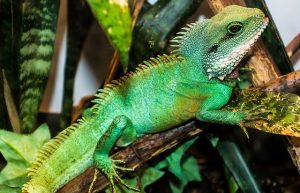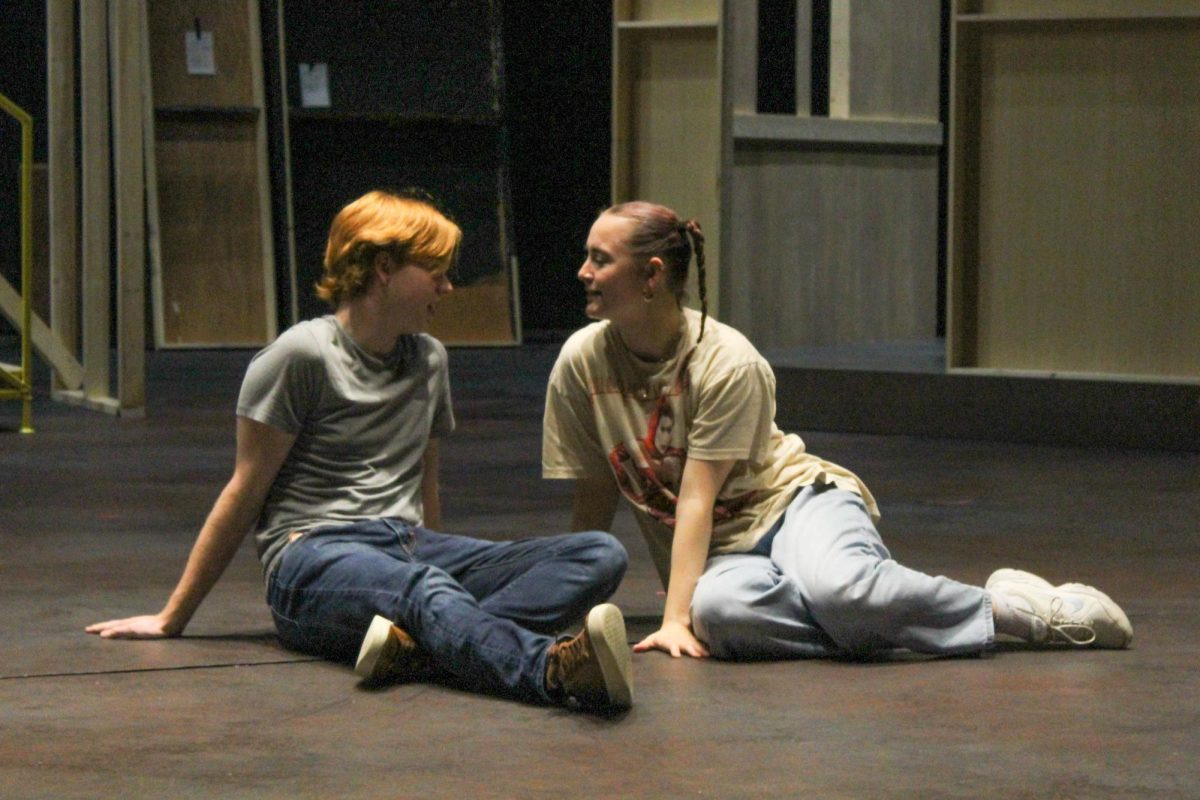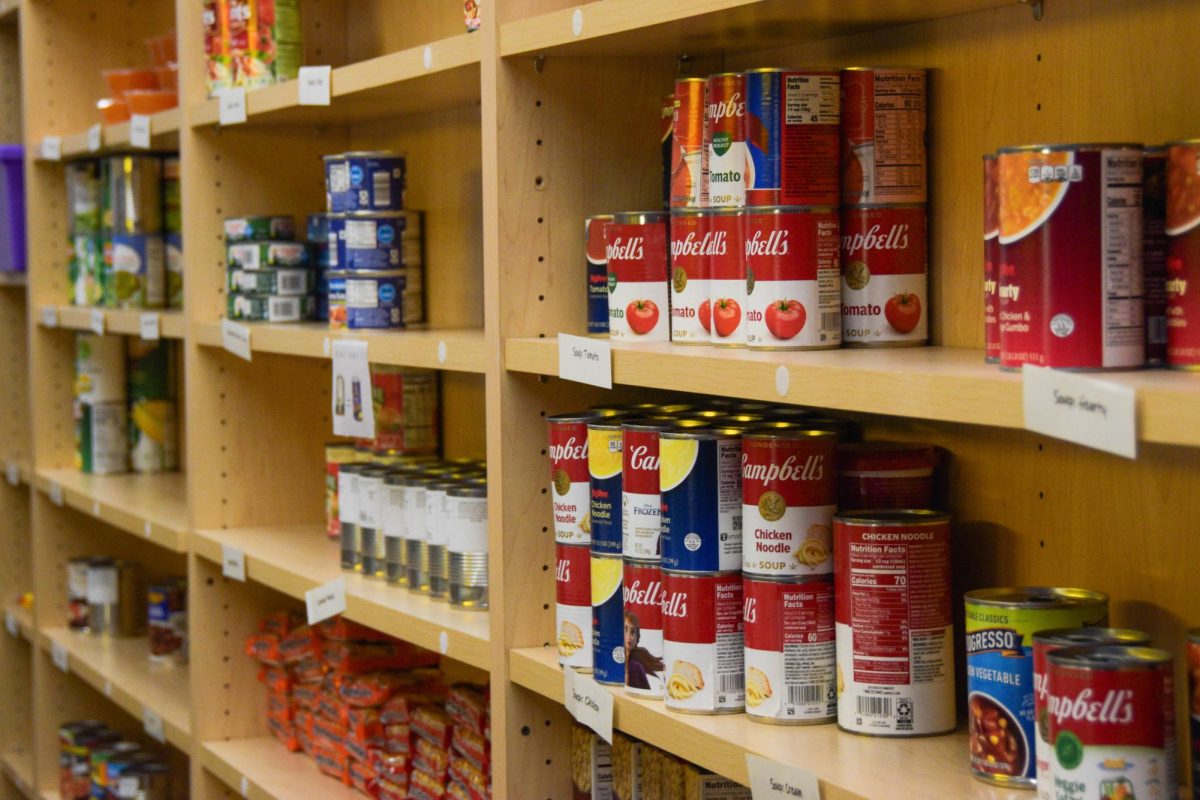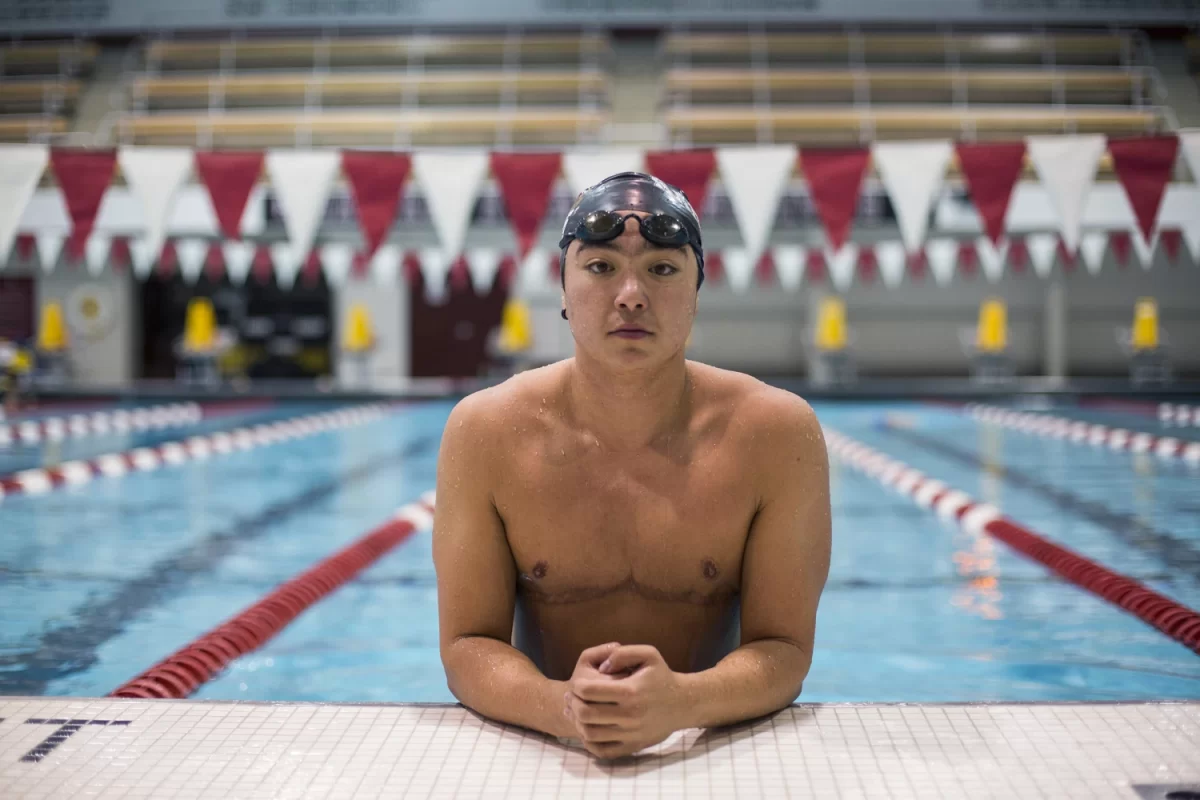
TAYLOR NYMAN
Molly O’Connor/Winonan
Many students who rarely visit the science buildings don’t know about the hairy, scaly specimens that live there.
Unsuspecting students who have happened upon them have responded with curiosity—or terror.
Room 234 in Stark Hall is the home of a number of the biology department’s critters. Two iguanas can be found lounging under a heat lamp. Nearby, a turtle swims in a tank. A tarantula lounges in its own terrarium, as do a number of crickets. Fish and frogs swim in their respective tanks.
They’re not just there for decoration. These animals are an important part of the biology department’s curriculum, which teaches students about the diversity of species and allowing them to get hands-on experience with the animals.
Robin Richardson, the animals’ supervisor, keeps track of the large number of animals through an inventory list.
“We have invertebrates; worms and bugs and tarantulas and that kind of thing. And then we have vertebrates: lizards, a turtle, frogs, fish.” Richardson said they keep some animals in swarms, like the guppies, crickets and goldfish.
The animals were brought into the department over 10 years ago to help biology students gain experience with a number of exotic species. Various students care for them for pay and take the experience with them to veterinary school.
“One of the aims that I had when I started doing this 10 or 15 years ago was to give people experience for going to vet school because a lot more people are doing exotics,” Richardson said. “A lot more people are going to want you to look at their iguana or basilisk or something, so it’s good when people have seen one before.”
As the years progressed, Richardson’s original plan to use the animals for one class evolved. Instead of serving one class, there are five classes that are offered at Winona State University that allow students to work with the animals.
The reason for this is to stress the importance of studying the diversity of species. “The Handbook for the Curious” is a freshman biology class with an emphasis on diverse life.
The animals are also helpful tools for student research. For Richardson, the research projects that students choose to do under her supervision must capture their interest.
“If someone is going to do research with me, it has to be based off curiosity,” Richardson said.
Richardson was the supervisor to a successful research project for a former undergraduate student, Jo Severson. Severson’s project focused on tending to the needs of the department’s two iguanas by figuring out which living situations worked best for them in terms of light, heat, humidity and other factors.
Creating a home for two iguanas indoors is a complicated task. The habitat, Richardson said, should be as natural a setting as possible while still being easy to clean and maintain.
“We’re always looking for ways to improve the display and habitat,” she said.
The success of Severson’s project earned her a spot for the 7th Annual Judith Ramaley Celebration of Research and Creative Scholarship, where she presented her poster on the research conducted on the reptiles inhabiting the Science Laboratory Center.
Part of Severson’s research meant sifting through a glut of information on iguana habitats.
“When you have animals on display, everyone has an opinion about what makes them happy,” Richardson said.
Severson learned online that there are a lot of different opinions about substrate – the terrain that iguanas live on.
“She had to see which site was the most reliable,” Richardson said.
Whether the animals are for research or just a curious part of the department, they are available to all students for viewing in Stark Hall, Pasteur Hall and the Science Laboratory Center.


































































